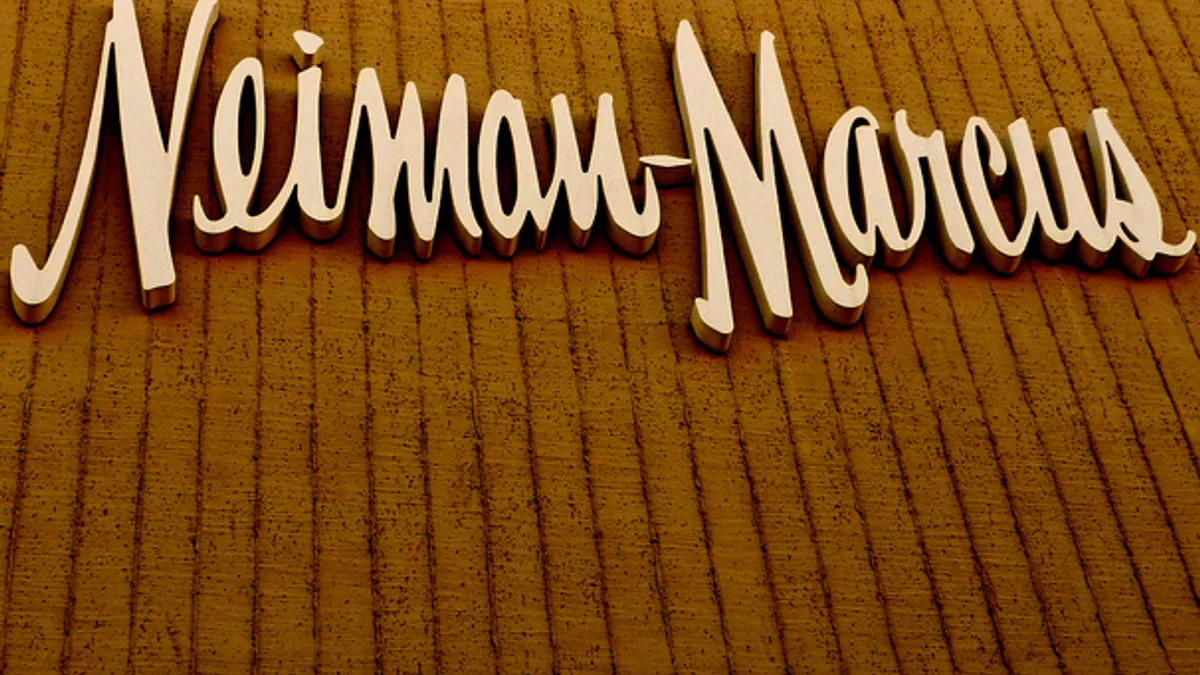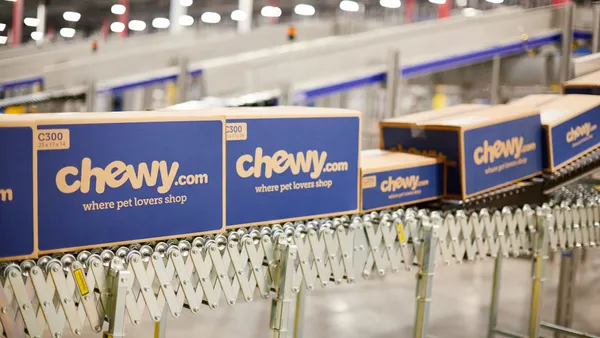Dive Brief:
-
UPDATE: Luxury department store Neiman Marcus said on Tuesday it will "explore and evaluate potential strategic alternatives, which may include the sale of the Company or other assets." Private equity owners are reportedly in talks to sell the 100-year-old department store chain to Canadian department store company Hudson's Bay, sources told The Wall Street Journal.
-
UPDATE: The news follows reports that merger talks between Hudson’s Bay and Macy's have broken down. Rumors of a sale surged earlier this year as Macy’s sought to head off a proxy fight ahead of its shareholders meeting; Macy's and Hudson's Bay reportedly began discussing an outright acquisition as well as a deal for Macy’s real estate and even potential partnership opportunities, but insiders say Macy’s asking price is simply too steep.
-
UPDATE: Neiman Marcus on Tuesday also reported that revenue fell 6.1% for the second quarter of fiscal 2017 to $1.40 billion, and it reported a net loss of $117.1 million compared to net earnings of $7.9 million during the year-ago period. Adjusted EBITDA was $126.8 million compared to $183.0 million during the second quarter last year, according to a press release.
Dive Insight:
Like many department stores, Neiman Marcus has been struggling for years to meet customer demand for seamless shopping across online and offline channels. The private company recently pulled plans for a long-awaited initial public offering, which it had filed for in 2015, and has hired investment bank Lazard Ltd to explore restructuring its ballooning $4.9 billion debt load, sources close to the matter told Reuters earlier this month, while adding there is no immediate threat of bankruptcy.
Like so many others in the struggling department store space, Neiman Marcus is beset by challenges such as falling foot traffic, growing consumer demand for faster fashion and mounting debt issues. In such dire times, Scott Emmons, head of the Neiman Marcus innovation lab, recently told Retail Dive that innovation isn’t just a good idea for retailers — it’s critical to survival. Changing shopping habits and emerging technologies bring new challenges to retailers like Neiman Marcus — and while they are no silver bullet, Emmons believes innovation labs can help solve the mounting problems facing retailers.
“If you are encountering headwinds, one of the ways to counteract that is to look for a new or better way to deliver value to your customers,” he said.
Innovation alone may not be enough to pull the luxury retailer out of its deep debt hole, however; cost cutting measures as well as a turnaround plan will likely be forthcoming. In her latest conference call with analysts in December, CEO Karen Katz acknowledged the difficulty in keeping up with constantly evolving consumer behavior.
“The customer has changed the way they shop in several fundamental ways,” Katz said. “One is driven by price transparency and the other is what we call ‘buy now, wear now.’ Besides being a treasure trove of merchandise, the internet gives customers greater access to information about price and promotion. They continue to shop for the best deal and the lowest price with less regard for loyalty, channel or brand.”
To address these challenges, Neiman Marcus is working to introduce more exclusive products in stores and online and is “working with our vendors to think differently about when they are shipping goods as well as which types of goods are being shipped at different points during the season," Katz said. "More progress will be evident in the seasons ahead.”
Neil Saunders, managing director of GlobalData Retail, saw the writing on the wall last year.
“In our view, such a debt burden is completely unsustainable for a company of Neiman Marcus’ scale,” Saunders said in a note emailed to Retail Dive in December. “Indeed, even if all interest was frozen and the entirety of operating profit was to be directed to the purpose of paying down the debt, it would take well over 40 years to remove it from the balance sheet. Such a position underlines the fragile nature of the company’s finances, something that hits home when the $72 million quarterly interest payments are appreciated. This acts as a major barrier to the company being sold and makes an IPO far less attractive. It also guarantees that without a significant rise in sales, the company will remain loss making.”












